While the United States is a country rich in multicultural communities with a global lens, its tech community is not immune to gender, racial, ethnic or other biases currently impacting the business world. There still exists a large gap in equal representation in local offices, and many startups are working hard to challenge the status quo. Progress has been made, but there's still a way to go.
To get an unfiltered view of the state of diversity in tech, we spoke with insiders from 17 startups and tech companies across the country. They talked about what’s working, what isn’t working and what the future holds for one of the most important issues in technology.
FREE REPORT: 2021 STATE OF DEI IN TECH. DOWNLOAD NOW.

Tala
Tech credentials: Founded in 2011, Tala's mission is to make financial access, choice and control more attainable to underserved communities around the world.
Who we spoke with: Shannon Yates - Data Analytics Lead, Chris Wiggins - Technical Recruiter
Are you seeing a concerted effort from the broader tech community to make tech teams more diverse?
Yates: Diversity efforts — in this case, ethnographic backgrounds, professional careers and personal acumen, rather than only race or gender — are becoming a growing area of focus, although there are still considerable challenges. Through our interactions with other managers and experience with other LA tech teams, it seems that there is more recognition of the value of diverse perspectives and new ideas.
Aside from being more conscious about who they’re hiring, how can tech companies become more diverse and accepting of all cultures?
Yates: An important conversation we’re beginning to have is around retention, not just growth. Startups tend to focus on what’s next rather than realizing the value of where they are. Tala is establishing programs for underrepresented groups to share their thoughts and ideas for improving our sensitivity, awareness and empowerment as a company. An example is our Tala women’s dinners, where women from all departments can develop projects to advance women in tech, promote each other’s achievements and have a safe space for open discussion.
Wiggins: Companies can also make an effort by hosting or highlighting events that reflect the values or backgrounds of their teams, like celebrating like we do at Tala. These are ways to show employees that you recognize what their background and uniqueness means to them and offers a way to stand out in the industry by demonstrating a commitment to once-unseen groups.

Unacast
Tech credentials: Unacast empowers companies to make smarter decisions and build better products by providing the most accurate understanding of human mobility in the physical world.
Who we spoke with: Rachel Peterson - Senior Director of Marketing
When do you think diversity in the workplace will just be the norm?
I want to be able to say within the next five years, but the truth is we’ve been having discussions about underrepresented groups in the workplace for decades, and there is still a long way to go.
That said, there is a renewed focus on closing the gap right now, and the business case for diversity is becoming impossible to ignore. I’m optimistic that we’ll see real, lasting change over the next 10 and 15 years as those who are fighting for that change rise through the ranks and become leaders at (or found their own) companies.
What’s the breakdown of your company’s demographics?
Unacast is very focused on gender diversity right now, and we’ve more than doubled the number of women working in various positions at the company over the past year or so. The breakdown is now close to 37 percent female and 63 percent male. The team also comes from a variety of ethnic and cultural backgrounds, and are located all over the world — 50 percent are in New York, 44 percent are in Norway and others are located in Portland and Austin. We’re 100 percent transparent about diversity — we keep an online chart of our demographic breakdown — and our continued efforts to improve it.

ThoughtWorks
Tech credentials: ThoughtWorks is a global software consultancy with offices all over the world.
Who we spoke with: Tarsha McCormick - Head of Diversity and Inclusion, North America
How do you work to promote diversity within your team organization?
Our approach to diversity and inclusion starts from our recruiting practices and continues through all phases of our employee’s career at ThoughtWorks. Aptitude, attitude and integrity have always been our core tenets. We have been successful in our recruiting efforts to consistently cast a wider net by looking beyond the computer science department for talented, diverse and compassionate individuals who possess intellectual curiosity and transferrable skills. This practice has succeeded in increasing our pipeline of diverse candidates whom we may have otherwise missed.
Hope and good intentions do not yield results.
We promote diversity and inclusion at ThoughtWorks on multiple fronts including: diverse interview panels, offering unconscious bias awareness workshops and other trainings, selecting a diverse group of candidates for leadership development programs and opportunities, offering parental leave benefits, establishing a policy for gender transitioning in the workplace, and creating a Diversity and Inclusion Council comprised of employees from all of our North America offices.
What are some lessons you learned while implementing those initiatives?
We have learned important lessons on our diversity and inclusion journey that I would encourage any organization new to the diversity and inclusion space to consider. These lessons are timeless and continual:
- Hope and good intentions do not yield results. When it comes to diversity and inclusion, you have to be intentional and have a plan otherwise you will not see the change or progress you desire.
- Change may not happen overnight, especially when it comes to demographics. Do not get discouraged. If you continue to put time and effort into creating a more diverse and inclusive workplace, you will see results.
- Include your employees in the process! Get their input and buy-in, and allow them to contribute and lead some of the initiatives.
- Do not shy away from tough conversations. Conversations about gender, race, sexism, ageism, etc. can be challenging, but you should not avoid them. In order for your diversity and inclusion efforts to be meaningful, you have to navigate through some uncomfortable areas, but your organization will be better off as a result of it.
- Lastly, do not rest on your laurels because there is always room for improvement.
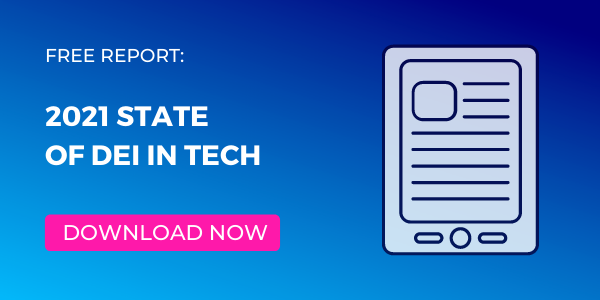
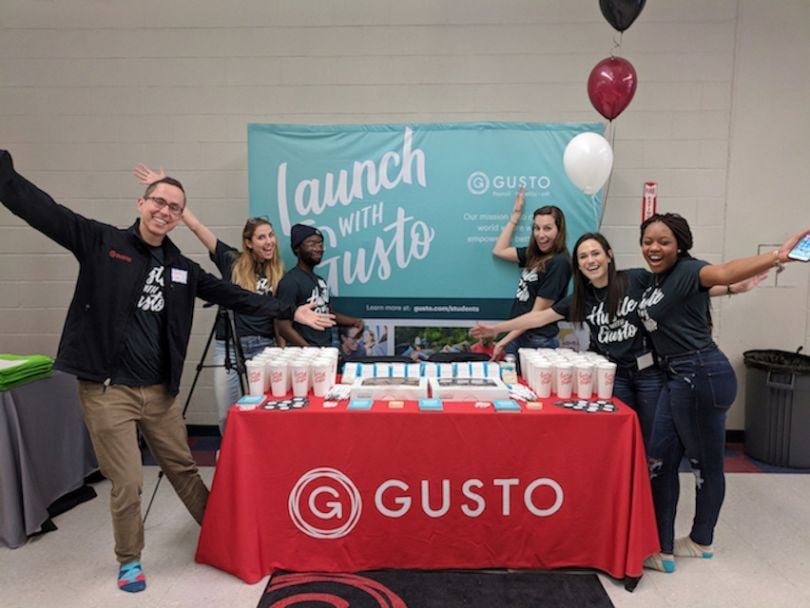
Gusto
Tech credentials: Denver-based Gusto is a provider of HR, payroll and benefits software.
Who we spoke with: Maryanne Caughey - Head of People
What are some of the biggest challenges to promoting diversity, and what can be done to combat these challenges?
One of the biggest challenges to promoting diversity is having everyone recognize that bias (both conscious and unconscious) is a significant barrier to effective decision-making, team collaboration and management. That's why we held training this year to learn how to recognize unconscious bias and discuss concrete actions we can take to make better, more objective decisions.
However, this kind of training is not a silver bullet and can backfire if not designed intentionally. It’s not enough to simply become aware of unconscious biases — we need to equip people with specific skills and tools for managing bias. That’s why we’re continuing to invest in ways for everyone at Gusto to take responsibility for making the company a vibrant and welcoming place.
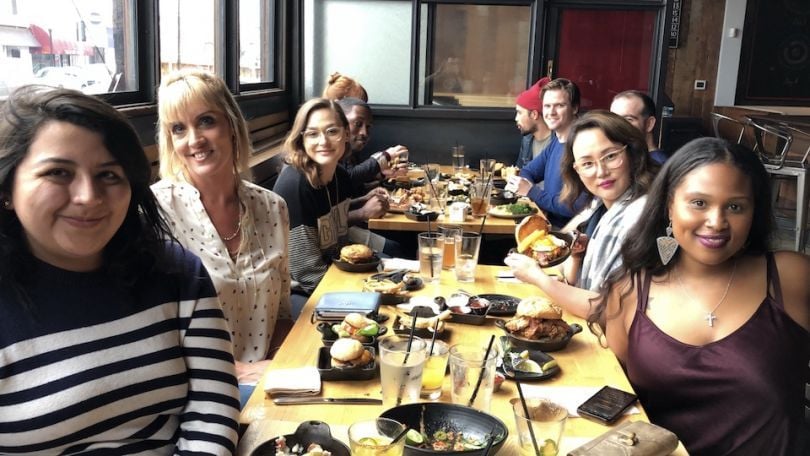
NOM [This is NOM]
Tech credentials: NOM is a video technology company that harnesses data to offer companies contextual targeting across social media channels.
Who we spoke with: Cyndi Otteson - VP of Marketing
Are you seeing a concerted effort from the broader tech community to make their respective teams more diverse?
The tech community still has a long way to go as far as diversity is concerned. While some companies are making an effort to hire more women and minorities, the effort needs to go beyond checking boxes and adjusting percentages. Companies need to embrace and celebrate diverse ways of thinking. Understanding cultural differences improves company morale and leads to better business outcomes.
What are some obstacles standing in the way of making tech a more diverse place?
One of the biggest obstacles is that people and companies are reluctant to challenge the status quo. Tech companies need to prioritize and celebrate diversity as a principle of their work culture. There needs to be buy-in from every level of the organization, not just top-level executives.
Companies can make any team look diverse, but, ultimately, diversity is deeper than skin color and appearances.
Aside from being more conscious about who they’re hiring, how can tech companies become more diverse and accepting of all cultures?
Tech companies can become more inclusive by getting involved with social conversations, social justice and equality issues that are important to their teams. During the hiring process, CEOs should know that even though they have an African American woman on the team, she does not represent the voice of all African American women. Companies can make any team look diverse, but, ultimately, diversity is deeper than skin color and appearances. It's important to embrace all cultures and get to know people on a personal level.

GreatHorn
Tech credentials: GreatHorn is a cybersecurity solution for cloud communication infrastructure, including email, collaboration and chat tools.
Who we spoke with: Kevin O’Brien - CEO and Co-Founder
What does diversity mean to your company?
We consider diversity to be a key competitive differentiator for GreatHorn and a core element of our company culture. Companies who embrace a range of diverse opinions are in a better position to create better relationships with customers, identify opportunities, and read and react to changes in the market than those with monocultures. It’s essential for us that our team bring a broad range of experiences, perspectives and ideas to the table.
What is the diversity of your workforce?
At GreatHorn, we are continuously looking to reinforce the diversity of our 2017 workforce. Nearly half (40 percent) of GreatHorn’s leadership team are women, representing multiple different backgrounds. Our team overall encompasses a wide range of different age groups, cultural backgrounds and perspectives.
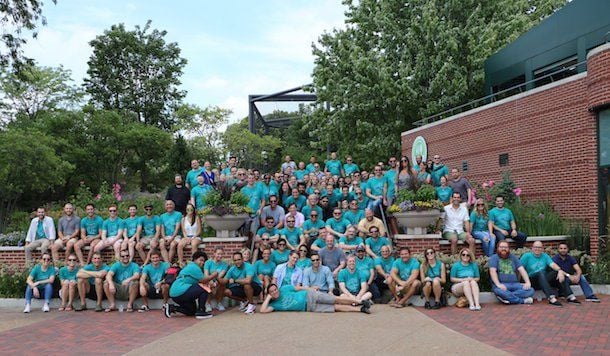
DialogTech
Tech credentials: DialogTech helps companies understand which of their marketing efforts are driving potential consumers to pick up the phone and get in touch.
Who we spoke with: Amy Dolan - Director of Human Resources
How do you work to promote diversity within your team?
We have worked very hard to promote diversity within our team and have been very deliberate in our hiring efforts to support building a diverse workforce.
One of the ways we are building a diverse workforce is by eliminating bias in our job postings. We use a service called Textio that helps us identify words and phrases that appeal to different genders and replace them with gender neutral words — ensuring that one job doesn’t yield more male applicants than females and vice versa. Since using this technology, we have been able to increase our female headcount by 62 percent.
On top of that, we encourage our employees' involvement in organizations and conferences that promote diversity. It is a great way to network, recruit and embody our commitment to promoting diversity.
What are some lessons you learned while implementing those initiatives?
Change takes time and effort. Making diversity a priority, building a diverse workforce and continuously promoting it is not something that happens overnight. While we have made amazing progress like implementing a new parental leave policy that allows for 12 weeks of fully-covered maternity leave, 100 percent paid by DialogTech and drastically increasing our female headcount, we know there is still a lot of work to do. Diversifying your company is something that you have to dedicate time and funds to and discuss regularly, and if you're doing it right, it will always live on your to-do list.

Yotpo
Tech credentials: Yotpo helps brands effectively leverage social proof to increase trust and sales, cultivate loyal customer advocates, and make better business decisions based on customer feedback.
Who we spoke with: Stevie Cogan - Senior Talent Acquisition Specialist
How do you promote diversity and inclusivity in the workplace?
Not only is it important to seek out and welcome unique backgrounds but once a person joins, it’s essential to create an environment in which each person is heard, appreciated and recognized for any sort of difference.
The easy thing to do is sweep it under the rug — having open (and sometimes uncomfortable) conversations is harder.
To track our progress, Yotpo conducts bi-annual surveys to collect feedback from our employees. That survey inspired our Women at Work group where we discuss the trends, challenges, and issues women and other marginalized groups face in the workplace, especially in the tech industry. It inspired our Pride Month initiatives including choosing to donate to the Equity Fights AIDS charity that month. It also shows us where we still need improvement: celebrations for Black History and Hispanic Heritage months, involvement in Pride Planning from both LGBTQ+ employees and allies, in addition to prioritizing hiring and promoting more females into leadership.
Why is keeping diversity and inclusivity top of mind important for your culture?
It’s simply the right thing to do. The easy thing to do is sweep it under the rug — having open (and sometimes uncomfortable) conversations is harder. However, the only way to ensure that we are progressing in the right direction is to welcome other perspectives and evolve from a variety of backgrounds. If you don’t keep it top of mind, the next time you look up, you’ll be surrounded by much of the same.
Yotpo’s not perfect, but prioritizing diversity in our individuals’ backgrounds, experiences and thought processes continues to be at the forefront of our growing team. There are always ways to improve, and we’re proud that our leadership has made diversity this year’s global initiative.

PatientPop
Tech credentials: PatientPop offers medical practices an all-in-one digital marketing platform to help them scale operations.
Who we spoke with: Lacey Plache - Lead Data Product Manager
Are you seeing a concerted effort from the broader tech community to make tech teams more diverse?
In order to make teams more diverse, it is key to build environments that support diversity. From what I have seen, tech companies — many of which are newer companies — are embracing the opportunity to incorporate best diversity practices as they develop.
For example, there's a lot of buzz right now about encouraging women in tech and I've seen a surge in groups emerging to support them. PatientPop has a group within our technology department dedicated to culture and diversity whose purpose is to increase the breadth of viewpoints to facilitate ideation and creativity. We also have a company-wide Women's Resource Group which celebrates our achievements and promotes career development.
The fact that many tech companies offer working environments that are conducive to working parents, such as flexible hours, the option to work from home and generous leave policies, certainly helps attract women.
Aside from being more conscious about who they’re hiring, how can tech companies become more diverse and accepting of all cultures?
Having flexible policies that allow people to work productively and still adhere to their personal obligations.
Sponsoring and participating in events that demonstrate diversity in tech and encouraging diverse team members to represent the company at industry events. Doing outreach to young people in high school and college to shape perceptions about careers in tech, including the need for and welcoming of diversity in tech. Examples could range from participating in career days to hosting special events or competitions to offering internships.
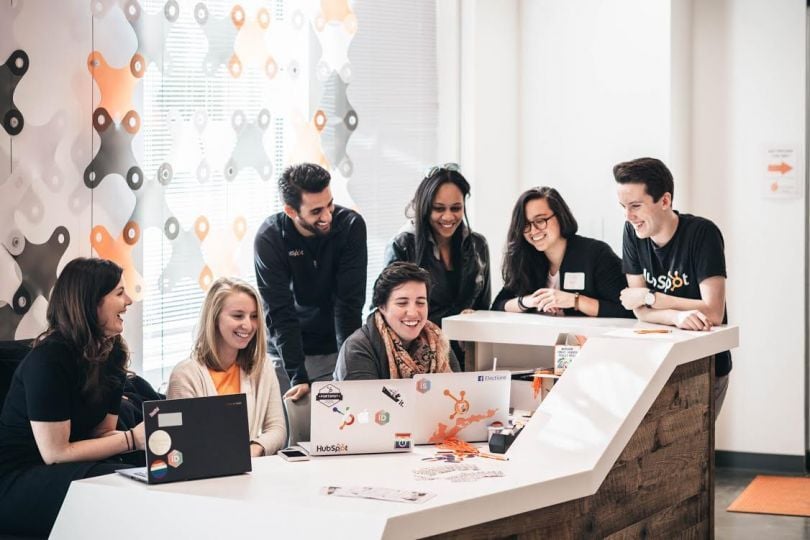
HubSpot
Tech credentials: HubSpot develops cloud-based, inbound marketing software that allows businesses to improve the way that they market online.
Who we spoke with: Katie Burke - Chief People Officer
What does diversity mean to your company?
At HubSpot, our diversity and inclusion initiative is a business priority. Diverse teams perform better, and we’re trying to build a global company that outlasts us. But equally important, building a diverse and inclusive workforce is the right thing to do. We want to create a company where people can do their best work, and that means an environment that feels inclusive to people regardless of nationality, ethnicity, gender, sexuality, age, race, religion, socioeconomic status and thought.
... we are proud of our employees, candidates and customers for pushing us to be transparent.
What is the diversity of your workforce?
We published HubSpot’s workforce diversity data at the beginning of 2017; you can view the full report and numbers here. As with many of our peers in tech, there’s a lot of work to be done. While we’re not proud of the story the data tells today, we are proud of our employees, candidates and customers for pushing us to be transparent. Our humility is matched only by our desire and commitment to improve on diversity and inclusion throughout the organization. We have a lot of work to do to make that happen, but I couldn’t be more humbled and proud to work on such an important aspect of our company and culture.
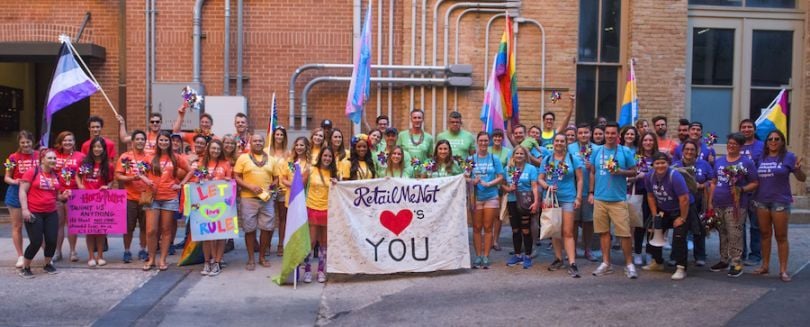
RetailMeNot, Inc.
Tech credentials: RetailMeNot is a leading savings destination that influences purchase decisions through the power of savings.
Who we spoke with: Christine McCarey - Head of Diversity and Inclusion
How do you promote diversity, both within your team and in the broader tech ecosystem?
In less than one year, we have launched and scaled a multi-department, multi-level diversity and inclusion council and seven employee resource groups led by emerging leaders in our organization. Our diversity and inclusion council and ERGs partner amongst themselves and with our corporate giving program, RMN Gives, to actively engage in community and industry outreach efforts. We have partnered with Blacks in Technology, Hello World, Out Youth, Code2College and AnitaB.Org Austin. Thanks to our legal team, we also support initiatives like Keep Texas Open for Business.
The program also partners with our people team to implement unconscious bias interrupters. For example, we have an unconscious bias program that includes in-person and online trainings. We measure their impact through pre- and post-training surveys. We have also implemented an enterprise-wide software tool to help neutralize language in our job descriptions and attract a more diverse candidate pool.
How did those initiatives come to be?
Our diversity and inclusion program started with a realization that our leadership needed to reflect our internal demographics and our customer base. This work began as a women’s initiative, but it quickly pivoted to be more inclusive. I credit our CEO, Cotter Cunningham, and our chief legal officer, Jonathan Kaplan, for creating the space for that to happen.
In just about one year, we went from identifying a need for a diversity and inclusion program to a full launch with a roadmap, ERGs in place and executive buy-in. While incredibly fast in turnaround, the program was thoroughly researched and thought out.
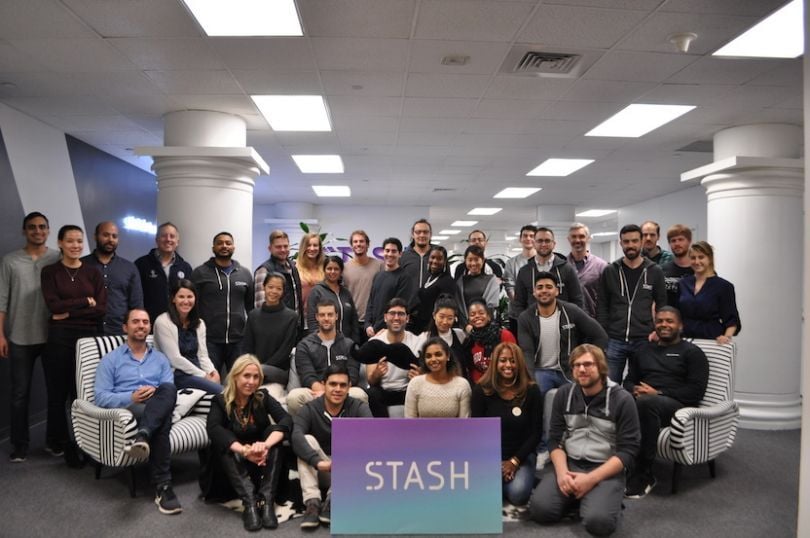
Stash
Tech credentials: Stash is a digital-first financial services company committed to making saving and investing accessible to everyone.
Who we spoke with: Natalie Ledbetter - VP of People Operations
When do you think diversity in the workplace will just be the norm?
Honestly, I'd love to say that we are approaching a moment in time where we won't have to focus or discuss diversity in the workplace, but we simply aren't there yet. The Kapor Center for Social Impact ran a study that said that women are paid (on average) 20 percent less than men for the same job, nearly one-third of underrepresented women of color are being passed over for a promotion and LGBT employees are experiencing bullying (20 percent) and public humiliation (24 percent). Until we fix a myriad of institutional issues and address the systemic racism and sexism in tech, we will not get to a place where diversity in the workplace is the norm.
How does having a diverse staff inspire product innovation?
Understanding that we are building financial products for the millions of Americans that have been overcharged and underserved by traditional banks, brokers and investment advisors requires that our staff is not only representative of our customer, but that they have the divergent cultural lenses, frameworks and life experience to really think through the user journey and their needs.
What’s the breakdown of your company’s demographics?
We have been incredibly in tune to the gender gap in our industry, and are happy to report that as of two months ago, our team is 40 percent women, though we’d still like to improve that number. In terms of people of color, we are currently 45 percent non-white, but we are still looking to improve this number as well. Our average age is 32 right now, which shows that we are hiring and onboarding more senior folks.
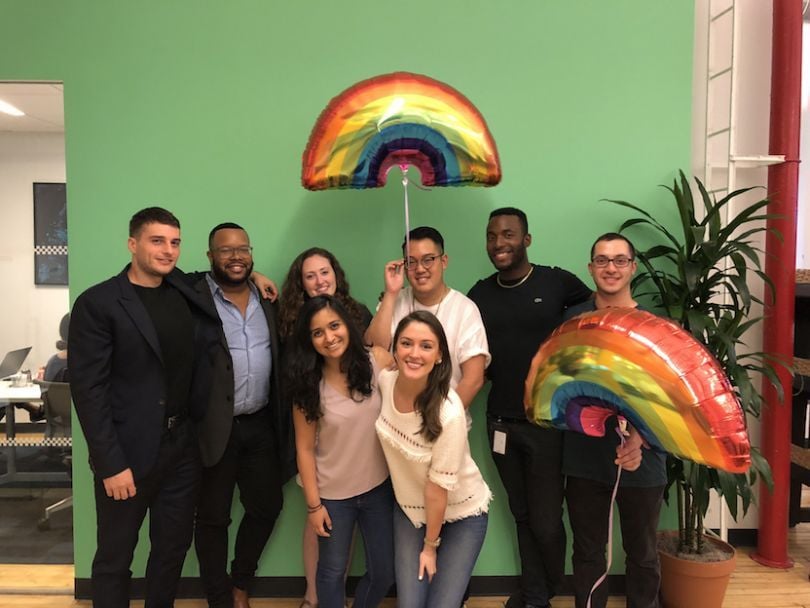
Dataminr
Tech credentials: Dataminr is the world’s leading real time information discovery company.
Who we spoke with: Kenji Porter - Manager of Technical Recruiting
How do you promote diversity and inclusivity in the workplace?
We work hard to provide a welcoming and supportive environment through policies and practices. For example, we ask new hires what their preferred pronoun is. We provide generous leave to parents and reservists. We enable everyone at meetings to have a voice and to hold each other accountable for demonstrating empathy, a core Dataminr value. Additionally, we launched “Together@Dataminr,” our company-sponsored, employee-led program that drives a variety of diversity and inclusion efforts in partnership with our executive leadership team. These include internal education and training sessions, community outreach initiatives and recruiting events aimed at engaging diverse talent pools.
Why is keeping diversity and inclusivity top of mind important for your culture?
When people feel comfortable being their authentic selves, they are more likely to be creative, take bigger risks and perform at higher levels. Prioritizing diversity and inclusivity is critical for a company and its people to reach their full potential. It’s more than creating an environment with people from different backgrounds — it's also encouraging diversity of thought and empowering everyone to share ideas, participate in initiatives for positive change and make meaningful contributions. I’m proud to work for a company that values and includes different perspectives in everything we do.
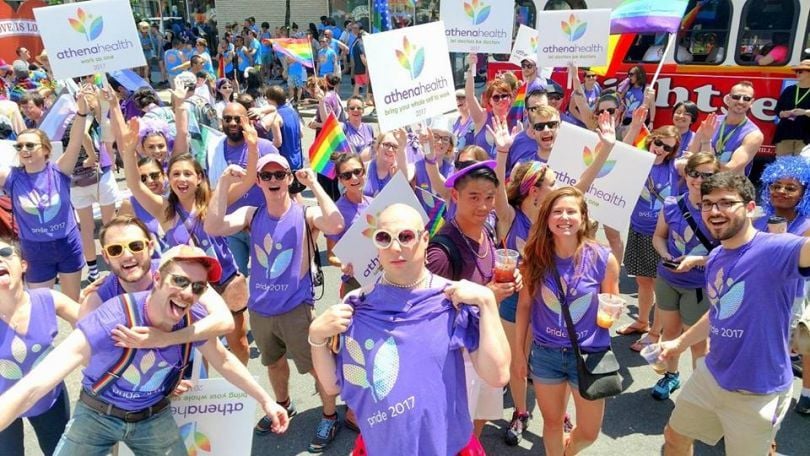
athenaHealth
Tech credentials: athenaHealth helps healthcare professionals perform administrative responsibilities at scale.
Who we spoke with: Multiple
How do you promote diversity, both within your team and in the broader tech ecosystem?
We have multiple internal initiatives. We host “Hot Topic” events where we discuss issues relevant to our work and society. Throughout the office, we hang posters featuring cool diversity facts, and we also host Jeffersonian Dinner discussions. External of athena, we volunteer at Girls Who Code, Refugee Services of Texas and AGE of Central Texas. We also actively look for awesome new athenistas at diversity-themed events, like the Tech Jobs Tour and the Grace Hopper Celebration.
Most people care greatly about diversity initiatives taking place at their companies — but they still have their full-time jobs, too.
How did those initiatives come to be?
I’m happy to say that they came about organically. There are so many people in our office who care passionately about issues of diversity and want to discuss them, which led to the formalization of a lot of efforts that were already happening in pockets around the campus. We ultimately synced our office grassroots efforts with those happening at other athena campuses and became part of the company-wide athenaDiversity Council.
What are some lessons you learned while implementing them?
Most people care greatly about diversity initiatives taking place at their companies — but they still have their full-time jobs, too. What employees need most is to be provided with easy and accessible opportunities to contribute. That’s why it’s so important to have a leadership team built right into our office that creates volunteer opportunities, internal initiatives and other ways to get involved.
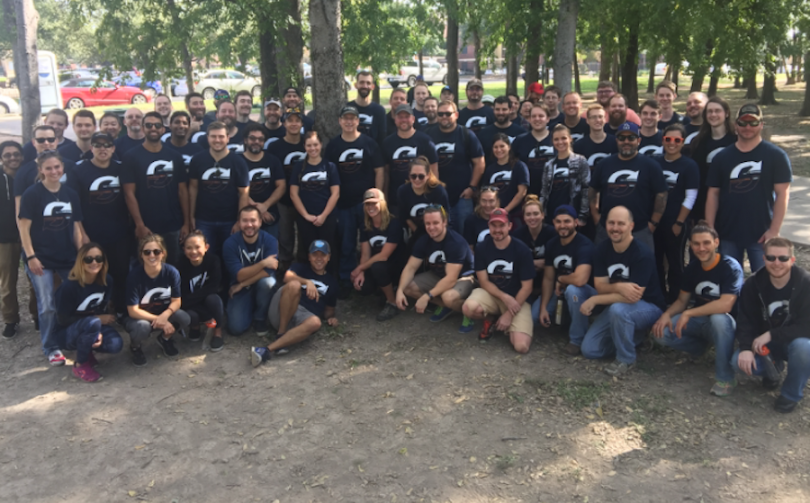
Rapid7
Tech credentials: Rapid7 builds IT security solutions for clients like Microsoft, Netflix and Adobe.
Who we spoke with: Christina Luconi - Chief People Officer
How do you promote diversity, both within your team and in the broader tech ecosystem?
Candidly, we've always had a fairly inclusive culture. We have a large variety of people representing an abundance of different communities. However, we have become very mindful and intentional about the amount of thought and energy we put into how we attract a broader variety of people to our company, and the diversity of people they experience throughout the interview process. In essence, it's an all-hands-on-deck effort to ensure we are reaching the best possible people — wherever they might be.
How did those initiatives come to be?
We started by doing an in-depth analysis of diversity within the company through the help of our business intelligence team, both holistically and by team. Those results ultimately led to the creation of our 50/50 by 2020 initiative. This means we are driving for our workforce to consist of 50 percent women and underrepresented minorities by 2020. We realize that's a big challenge to hit in our industry, but it's challenging us to reimagine the way we attract, recruit and develop the incredible talent that comes to work at Rapid7. We aim to level the playing field in our industry, not accept the status quo.
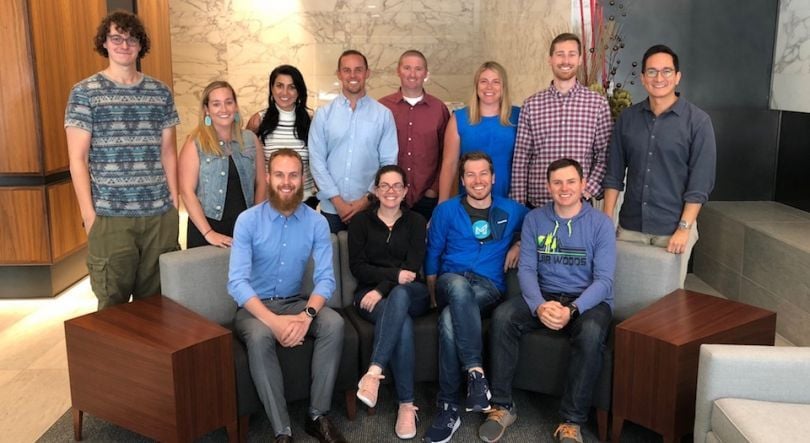
Maxwell
Tech credentials: Maxwell’s platform connects mortgage professionals with real estate agents and homebuyers.
Who we spoke with: John Paasonen - CEO
What are some of the biggest challenges to promoting diversity, and what can be done to combat these challenges?
At Maxwell, we see this as an on-going challenge we need to be intentional to address. Our city and our industry in fintech are already not diverse, so in many ways we're working uphill, and that takes effort and focus. Like anything in a startup, you have to continue to improve and iterate. That means being disciplined to review every job description through the lens of inclusiveness, for example, or extending the search for a candidate to ensure you've opened the funnel wide enough for broad evaluation.
What is the diversity of your workforce?
We're proud to be tracking toward our strategic goal (50 percent of candidates coming from an under-represented group) so far through the year and the results are meaningful already. If you look at our employee base, we've gone from representation of just 8 percent women at the end of 2017 and minorities to over 30 percent now. For many of our roles, this means avoiding the temptation to just hire the first qualified candidate that comes along. That's a difficult thing to do in a startup where time is a scarce resource. But by recognizing the long-term performance value of diversity and the broader impact it will have on our culture, the ROI goes up tremendously on the time investment to interview four or five more candidates to ensure we can hit our strategic goal. In many cases, we not only found someone even better qualified but also someone who could take their role to the next level.
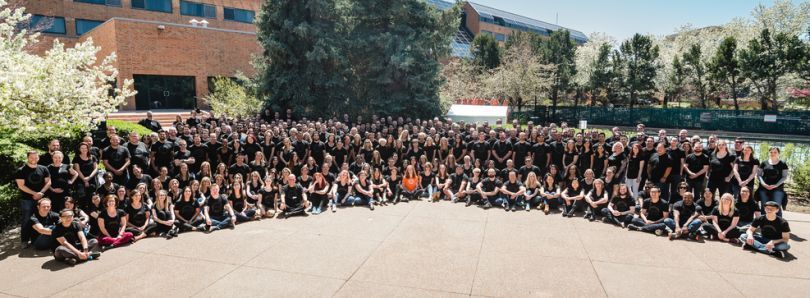
Xero
Tech credentials: Xero provides cloud-based online accounting software for small businesses.
Who we spoke with: Julie Boardman - Director of People Operations
Tell us about the diversity initiatives you are currently working on and the impact you have seen.
We are currently creating awareness of the difference between diversity, inclusion and belonging and its impact on our business goals, our culture and our individual well-being. We are experimenting with a variety of workshops, programs, mentoring and processes to up-level our interactions, reduce our unconscious bias and encourage flexible working, disability awareness, gender equity and LGBTQ inclusion. Xero has an inside out approach to D&I in our organization. We have an incredibly diverse customer base, and we always want to ensure that that is reflected in our brand.
What are some of the biggest challenges to promoting diversity, and what can be done to combat these challenges?
Continuing to increase our self awareness is an ongoing effort. One question we have to continue to ask ourselves is, “Are we reaching the wider talent market, and making our positions visible to a diverse candidate pool?” We have piloted efforts to post job openings on a variety of channels, and even experimented with augmented writing platforms to keep our postings balanced and consistent. While we still have a ways to go, we've seen that diverse work forces bring better ideas to the table, and ultimately enable us to better serve our customers and partners.
FREE REPORT: 2021 STATE OF DEI IN TECH. DOWNLOAD NOW.
Responses edited for brevity and clarity.



